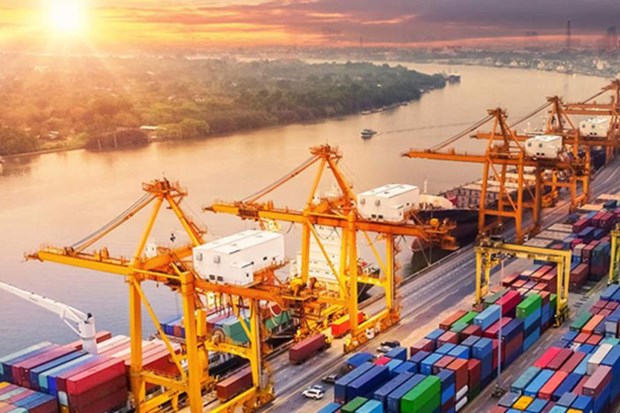- © Copyright of Vietnamnet Global.
- Tel: 024 3772 7988 Fax: (024) 37722734
- Email: [email protected]
GDP
Update news GDP
GDP growth rate high in H1, but many people, businesses still struggling
Vietnam had a positive GDP growth in the first half of the year, and budget collections were beyond expectations. But there is still a dark side to Vietnam’s economy.
Real estate market expected to recover when pandemic is under control
The COVID-19 pandemic has caused a slowdown in the property market but many experts believe this is only temporary and are pinning their hopes on a rebound once the virus is under control.
Private enterprises lack internal strength and driving force to develop
How will Vietnam overcome challenges to realize its development plans? Nguyen Dinh Cung, former head of Central Institute for Economic Management (CIEM), shares his perspective with VietNamNet.
Will 24 years be enough for Vietnam to become a developed country with high income?
The 13th Party Congress Resolution says Vietnam aims to become a developed country with high income by 2045, when it will celebrate the 100th anniversary of the country's establishment.
Vietnam's path to prosperity
The Vietnam 2035 Report, issued by the Government of Vietnam and the World Bank (WB), points out that if Vietnam doesn’t carry out reform, the average income per capita will be no more than $4,500 per annum by 2035.
Without significant reform, development goals will be difficult to reach
Vietnam needs to design proper solutions and policies to reach its development goals. How will the country overcome challenges to realize its development plans?
Fourth Covid-19 outbreak puts pressure on Vietnam strategic sectors: WB
Several signs suggest slowdown in economic activity if the pandemic is not contained in the short term.
Twin goal must be accompanied by vaccination strategy
In the current circumstance, countries that are able to reopen their borders will stand a bigger chance to spur economic growth. Such a chance are worth every effort to be made by Vietnam to grasp it.
New policies needed to boost Vietnamese private sector
While foreign-invested enterprises (FIEs) have been growing and prospering, Vietnamese enterprises have been developing inadequately because they lack favorable conditions to thrive.
Vietnam loses 3% GDP from not employing people with disabilities
An International Labour Organization (ILO) report shows that Vietnam loses 3 percent of GDP by not employing people with disabilities in the labor market.
VEPR: Vietnamese economy could grow by 6.3 pct in 2021
The Vietnamese economy could grow by about 6-6.3 percent in 2021, said chief economist Pham The Anh from the Vietnam Institute for Economic and Policy Research (VEPR)
The Minister of Industry and Trade's role in the country’s route towards industrialization
Newly appointed Minister Nguyen Hong Dien on April 12 more than once mentioned the spirit of "making every effort" and "learning with humility" at a conference on implementing the Party and State’s resolutions on personnel work.
Services sector expected to expand by 7-8 percent this decade
Vietnam’s services sector is targeting a growth rate of 7-8 percent in the 2021-2030 period, higher than the economy’s average growth rate, and eyeing to account for 50 percent of GDP by 2030.
Da Nang to develop international finance centre
The People’s Committee of central Dang Nang city and the Import-Export Pan Pacific Group (IPPG) has signed a Memorandum of Understanding (MoU) on the development of an international and regional finance centre to attract investors in the future.
Inflation not a source of concern for Vietnam: SSI
Vietnam’s consumer price index (CPI) is set to average 2.89% in 2021, below the government’s target of 4%.
Vietnam set to become second largest economy in Southeast Asia
Vietnam aims to become the second largest economy in Southeast Asia by 2030 thanks to its sound economic performance, Prime Minister Nguyen Xuan Phuc has said.
Vietnam GDP growth set to rebound to 6.6% in 2021: WB
Vietnam and China are the only two economies in East Asia and Pacific experiencing a V-shaped rebound where output has already surpassed pre-pandemic levels.
MIC sets up working group for promotion of digital economic development
A 10-member working group to promote digital economic development has been established by the Ministry of Information and Communications (MIC), led by Deputy Minister Nguyen Huy Dung.
Vietnam aims for 7.5-8% growth rate in next 25 years
To become a developed country by 2045, Vietnam needs to obtain a GDP per capita of $20,000 per annum. As such, it needs to reach a GDP growth rate of 7.5-8 percent per annum in the next 25 years.
Securities investors expect ‘new bank share wave’
Many commercial banks now pay trillions of dong worth of dividends to shareholders and have completed restructuring after a decade of difficulties. As a result, their share prices are expected to rise.



















